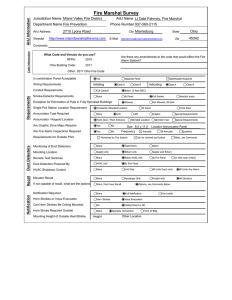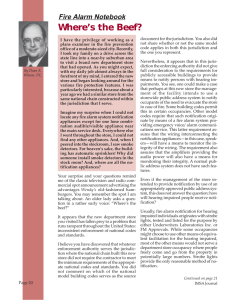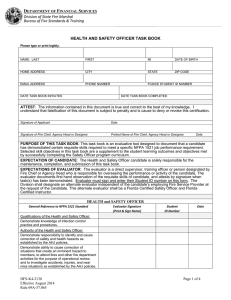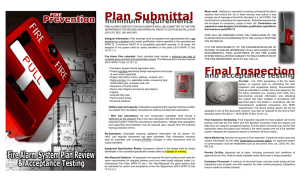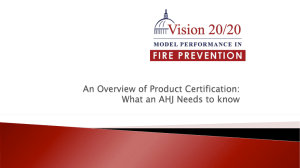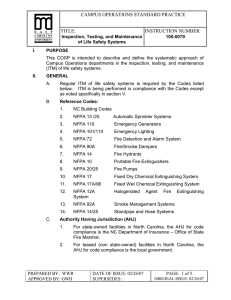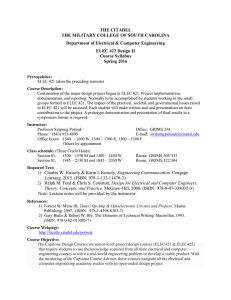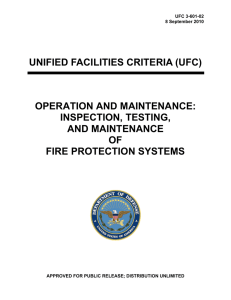Inspection, Testing and Maintenance of Fire Protection Equipment…
advertisement
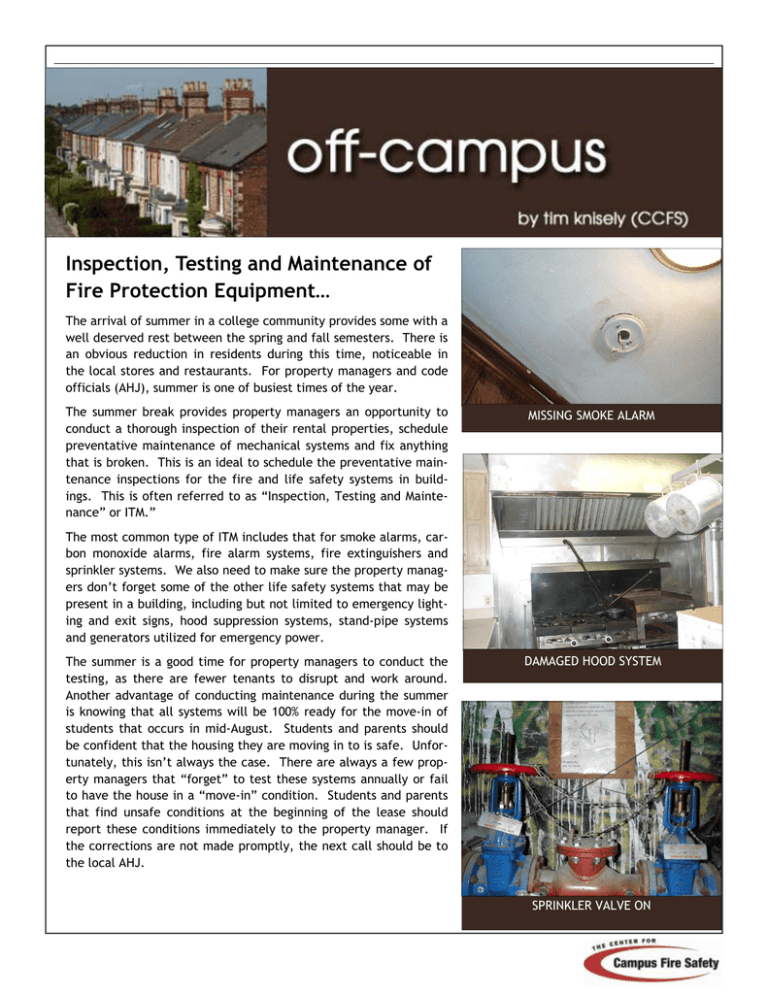
Inspection, Testing and Maintenance of Fire Protection Equipment… The arrival of summer in a college community provides some with a well deserved rest between the spring and fall semesters. There is an obvious reduction in residents during this time, noticeable in the local stores and restaurants. For property managers and code officials (AHJ), summer is one of busiest times of the year. The summer break provides property managers an opportunity to conduct a thorough inspection of their rental properties, schedule preventative maintenance of mechanical systems and fix anything that is broken. This is an ideal to schedule the preventative maintenance inspections for the fire and life safety systems in buildings. This is often referred to as “Inspection, Testing and Maintenance” or ITM.” MISSING SMOKE ALARM The most common type of ITM includes that for smoke alarms, carbon monoxide alarms, fire alarm systems, fire extinguishers and sprinkler systems. We also need to make sure the property managers don’t forget some of the other life safety systems that may be present in a building, including but not limited to emergency lighting and exit signs, hood suppression systems, stand-pipe systems and generators utilized for emergency power. The summer is a good time for property managers to conduct the testing, as there are fewer tenants to disrupt and work around. Another advantage of conducting maintenance during the summer is knowing that all systems will be 100% ready for the move-in of students that occurs in mid-August. Students and parents should be confident that the housing they are moving in to is safe. Unfortunately, this isn’t always the case. There are always a few property managers that “forget” to test these systems annually or fail to have the house in a “move-in” condition. Students and parents that find unsafe conditions at the beginning of the lease should report these conditions immediately to the property manager. If the corrections are not made promptly, the next call should be to the local AHJ. DAMAGED HOOD SYSTEM SPRINKLER VALVE ON Summer also brings about a great deal of new construction and renovations that all need occupancy approval of the AHJ by mid-August. Many of these improvements include the installation of fire protection systems as a retrofit to an existing building. Acceptance testing is required for the new systems to ensure compliance with the governing code or standard. This is one of the most critical inspections because a system that is properly installed will be much easier to maintain in the future. If deficiencies are found a year or three years after installation, it is very difficult to change and more difficult to convince the owner to pay for this change. There are a number of resources available to guide you through the ITM process. The National Fire Protection Association publishes most if not all of the standards utilized for the design, installation and maintenance of fire protection and life safety systems. For the AHJ to enforce these standards there needs to be a reference to the specific standard by a model code or a local or state law. Training is available by contacting the product manufacturer, the NFPA or any fire protection trade organizations for more information. GUESS THE YEAR Tim Knisely is the Senior Fire Inspector for the Centre Region Code Administration in State College, PA. He is also on the Board of Directors and Treasurer for the Center for Campus Fire Safety. Write about your off-campus housing experiences. Send your article to Tim Knisely. Tknisely@campusfiresafety.org A PROTECTED PULL STATION FACP IN ALARM

